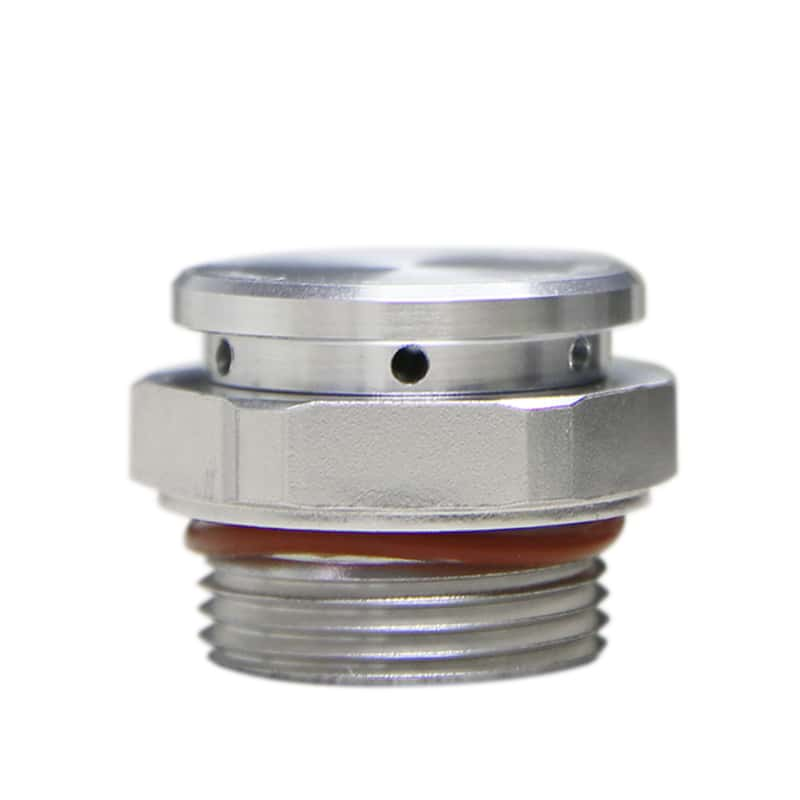By Barry Nelson, Public Relations Coordinator, WAGO Corporation
Push-In Connection with tool operation: Radiator Vent And Blanking Plug

With any push-in terminal block, solid or ferruled wires can be inserted into the block without the use of any tool in order to make a connection. This actuation style requires the insertion of a tool only for the introduction of stranded or flexible wires, or for the subsequent removal of any conductor type.
Terminal blocks featuring this connection technology and actuation style provide an easy, fast way to wire no matter if the connection is made to a circuit board or in a control cabinet. They are good in small spaces and provide ways to ensure your hands are free to wire your application. By inserting the tool into the operating slot where it is held firmly in place, you are able to introduce wires before removing the tool to complete the operation. Wires can also be disconnected from the block in the same way. One final advantage is their economic value. Tool-operated push-in terminal blocks are inexpensive, reliable, and utilize a spring clamp to ensure connection without the use of a screw.
However, one of the limitations of this type of terminal block actuation is the intuitiveness of use. If the user is unfamiliar, particularly in a field-wired application, or if the location of the connection is poorly lit or hard to access, it may be unclear to them exactly where to insert the tool or introduce the wire in order to make the connection. There are typically multiple ‘openings’ in a terminal block for wire entry, tool insertion, jumpers, test, etc. The sheer number of openings may confuse or overwhelm the unfamiliar or inattentive user.
WAGO has been providing these tool-operated push-in terminal blocks, for DIN Rail mounted applications, for decades. They have become an industry standard along with their exclusive CAGE CLAMP® design that allows for a reliable, maintenance-free connection. Click here to discover all of WAGO’s Rail Mount Terminal Block options.
Push-in Connection with Push Button operation:
Distinguishing where the actuation and wire connection occurs in a terminal block makes using the push-in connection with push button operation a widely used and highly effective option. All you need is an actuation tool to operate the push button in order to terminate the connection, introduce the (stranded or flexible) wire or disconnect any wire and then releasing the tool to make the connection. This type of actuation is beneficial for those applications in tight spaces where other forms are unable to be used. The connection is secure, once again because of spring clamp technology, is able withstand heavy vibration and viable against other environmental factors.
One of the only limits of the push button is that you need to operate the tool with one hand and wire with the other. Issues can arise if the terminal block is not securely mounted on a DIN rail or some other facet, as this operation would be difficult to do while holding the terminal block or assembly in your hand. The block would have to be held in place while using the tool to depress the push button and insert wires.
Thanks to their Universal Push-In CAGE CLAMP® technology, WAGO’s push button terminal blocks are able to accept all conductor types. Their TOPJOB® S Push-Button Terminal Blocks will never stick in the open position and provide positive feedback during actuation.
Push-In Connection with Lever operation:
This is the “new kid on the block” in regards to connection technology and actuation style on terminal blocks. With an ergonomic, touch-safe lever design, it allows for a 100% tool-free wiring experience and provides safe, reliable connections. As with all push-in style connections, certain wire types can be directly inserted even without lever operation. For stranded or flexible wire, all you need to do is lift the lever, introduce the wire and then close the lever for fast, easy wiring every time, eliminating any concern for a quality connection. This is ideal for field wiring and by far the most convenient type of terminal block to use.
The one issue users may run into with lever actuation is applications in which available space necessarily prevents access to, or otherwise impedes, the travel arc of the lever and you have to go with a different type of terminal block. As lever actuation becomes more common and eventually the industry standard, people are going to be hard-pressed to go back to anything else.
Determining which connection technology and method of actuation to use can depend on several factors: type of application, space, and wire type, among others. The development of the spring clamp has made wiring easier, more reliable, as well as more durable. Just the ease with which you can wire alone, not to mention less time spent and the maintenance-free aspects are making the screw terminal block rarer in the field. Not only that, but WAGO also continues to use their innovative CAGE CLAMP® design to make wiring easier, safer and more reliable. If there is a choice of connection technology and method of actuation in an application, it’s nice to know that there are a number of high-quality, reliable options to fulfill your needs.
To see a video to determine which variant is right for your application, go to www.wago.com/us/topjob-s-variants.
Browse the most current issue of Design World and back issues in an easy to use high quality format. Clip, share and download with the leading design engineering magazine today.
Top global problem solving EE forum covering Microcontrollers, DSP, Networking, Analog and Digital Design, RF, Power Electronics, PCB Routing and much more
The Engineering Exchange is a global educational networking community for engineers. Connect, share, and learn today »

Dc Terminal Block Copyright © 2024 WTWH Media LLC. All Rights Reserved. The material on this site may not be reproduced, distributed, transmitted, cached or otherwise used, except with the prior written permission of WTWH Media Privacy Policy | Advertising | About Us